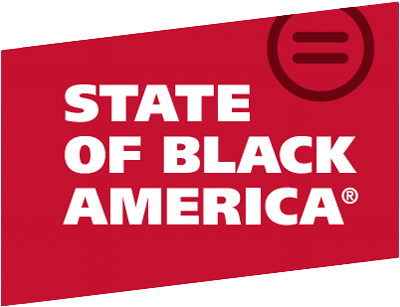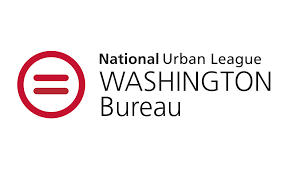We are on the advent of significant technological progress where machines and systems will make decisions based on learning from examples and concrete data sets. The positive implication of building processes on algorithms is that technology companies will have the ability to build better digital applications that interact with human-made objects, such as photos and online searches. The first step in creating an algorithm requires providing a program with lots and lots of data. However, when data is completely lacking for a community of color, this group simply does not exist in the digital space.
One group in particular bears the brunt of this online obscurity. Surveys and studies on digital access issues within communities of color consistently overlook the Asian American community, or worse, create incomplete pictures by only sampling a non-representative portion of the community. One often cited reason is that the community is too disparate to study in a cohesive manner. Another cited reason is the costs involved in sampling in multiple Asian languages.
Even efforts to collect data to assist companies in engaging Asian American consumers often miss the mark. One such study came to the questionable conclusion that 93% of Asian American households have high-speed internet access. The survey recruited Asian participants online and in English, leaving out a significant population from the entire community. Approximately 23% of Asian households are limited English proficient, which means that any survey conducted only in English—and exclusively online—will result in skewed data. This oversight when studying the Asian American community as it pertains to digital access is disconcerting, especially when one considers the fact that Asians remain the fastest-growing community of color in the United States. What’s more, as digital access moves from being a luxury to an absolute necessity for all communities, understanding the needs of this emerging and diverse population becomes even more important.
The Asian American community is not monolithic. Any effort to understand this community must be a deliberate and vested choice. With each ethnic group having distinct levels of success, history with our government, and predictors for upward mobility, understanding this community requires a dedicated interest in collecting accurate information. For example, U.S. Census Bureau data from the 2016 American Community Survey Single-Year Estimates show multiple Asian ethnic groups have a considerable percentage of households with less than a high school degree. Disaggregated data also reveals many Asian subgroups with lower income levels as well as limited English proficiency. Reviewing these factors unmasks a lack of digital access for a substantial proportion of the Asian American community.
Asian Americans Advancing Justice | AAJC works to empower the Asian American community and build an equitable society for all. We rely on statistics and demographic data to help us understand the needs of our diverse community, especially as it concerns digital or telecommunications access. In some cases, when the data is missing, we work with community partners to identify Asian Americans struggling with access, as illustrated by the story of Mrs. Quach.
“I usually use the phone to listen to Vietnamese music,” she explained during a phone interview with our staff. Her responses were translated over the phone by a friend who was helping us understand how senior Vietnamese refugees in the Houston area were benefiting from Lifeline, a federal program administered by the Universal Service Administrative Company (USAC) that provides discounted phone service for qualifying low-income consumers.
“I cannot afford to pay a monthly fee for the phone. The Lifeline program is important to me because it saves me money,” she continued.
Mrs. Quach is not alone in recognizing the benefits of such a critical program. In fact, over ten million subscribers were enrolled in 2017. Yet USAC, also charged with tracking Lifeline enrollment, only publishes data on enrollees who are Black, Latino, or white. Asian Americans are completely left out of this data compilation. Without a clear idea of how Asian enrollees like Mrs. Quach benefit from Lifeline, it becomes difficult to develop advocacy points on the impact of this program on the broader Asian community.
The implications of failing to gather detailed information on an emerging community are far reaching. For example, the Census Bureau has announced its goal of having 55% of the U.S. population respond to the 2020 census survey online using computers, mobile phones or other devices. Apart from a small share of households in 2000, this will be the first time all American households will have the option to fill the census survey online. Without understanding the digital access needs of emerging communities such as refugees who have settled in large swaths or African immigrants, we risk leaving individuals uncounted and, ultimately, unrepresented.
Two major steps can be taken to address this growing issue. The first is to take a disaggregated data approach when surveying diverse communities to gain a clearer representation of their needs. Success in developing well-rounded studies will ensure a better understanding of those needs. The second step is to establish public, private, and non-profit partnerships when developing these studies. Companies that have the capital and the interest to invest in studies on telecommunications and technological access can only benefit from the expertise of non-profit organizations that can build culturally appropriate questions and provide translation experts in order to ensure that complex questions on digital connection are fully understood.
From the civil rights perspective, surveys and studies customized to respective communities allow for better advocacy to better fund and market literacy and access programs that could benefit a substantial population. For private sector companies, understanding a community allows for targeted marketing, and ultimately, products that are needs-based. Better data drives better policies and allocation of resources from governments. It also shapes the planning, implementation, and delivery of services to all specific ethnic groups. In the end, having a comprehensive and quantitative understanding of diverse communities in the telecommunications and technology space is a net benefit for all.



